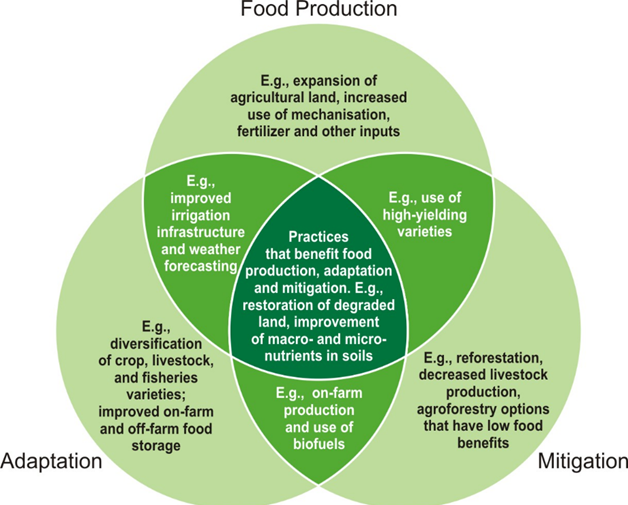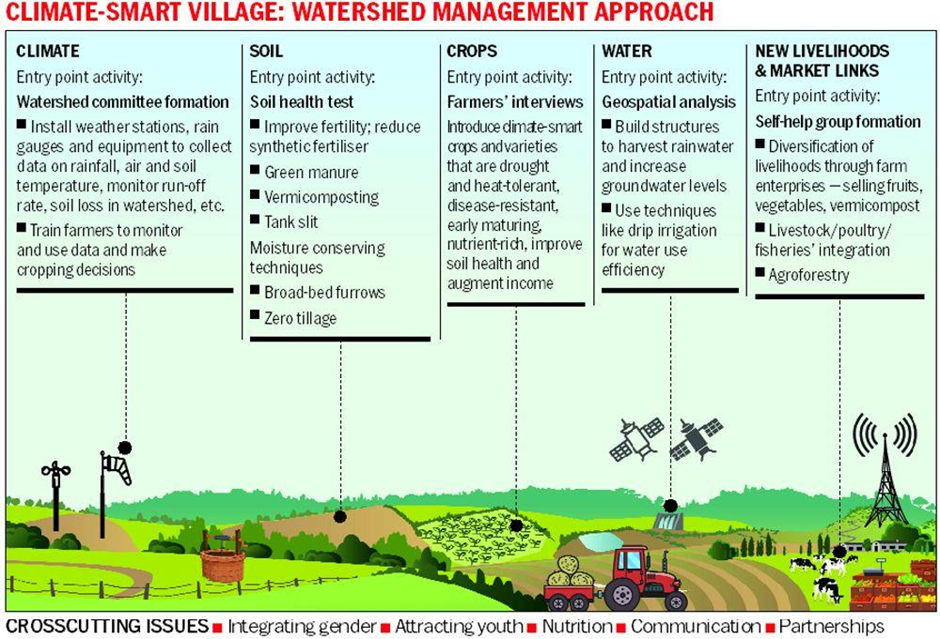NEW GOVERNMENT MUST FIX INDIA’S FOOD SYSTEMS
Relevance: GS 3 – Issues of buffer stocks and food security
Why in the News?
- Despite the intense election campaign in India and predictions favoring the current government’s continuation, plans are underway for the first 100 days of their third term.
- The upcoming government should prioritize enhancing productivity in agriculture, expanding processing and retailing capacities, and encouraging the adoption of new technologies.
- Ministries are actively engaging with experts to develop policies aligned with the vision of Viksit Bharat@2047.
Agri-Food Space Recommendations Based on ADB Forum Insights
These recommendations are informed by our discussions with experts during the four-day forum on food security amid climate change, organized by the Asian Development Bank.
Food Systems Transformation
- Agriculture needs to undergo a comprehensive transformation to produce more food, fibre, and biofuels using fewer resources.
- India’s population is projected to reach 1.6 billion by 2047, necessitating increased food production.
- Enhanced efficiency in land, water, labour, and input use is crucial to improve total factor productivity.
- Increased investment in agricultural R&D, innovations, and extension services is essential to achieve these goals.
Climate Resilience
- Extreme weather events due to global warming threaten the agricultural production system.
- The temperature for the last April to March period has surpassed the 5 degrees Celsius Laxman Rekha above pre-industrial levels.
- Last year’s El Nino effect caused a sharp decline in agri-GDP growth from 7% in 2022-23 to 0.7% in 2023-24.
- Knee-jerk reactions like export bans, stock limits, and selling government stocks below economic costs to control food inflation are not sustainable solutions.
- The focus should be on investing in climate-resilient (smart) agriculture, including heat and flood-resistant seeds and efficient water management.
- Technologies like drips, sprinklers, and protected cultivation should be adopted on a larger scale to achieve “more crop per drop.”
- Efficient Water Use
- Nearly 78% of India’s freshwater is used for agriculture, emphasizing the need for efficient water management.
- Wise water usage is essential to prevent water shortages in cities, with Bengaluru’s water crisis serving as a warning.
Urbanization and Logistics
- By 2047, over two-thirds of India’s population will reside in urban areas, up from the current 36%.
- Migration to urban areas for higher productivity jobs is a natural and unavoidable process.
- A significant logistics revolution is needed to transport, stock, process, and retail food from rural to urban areas.
- This transformation presents opportunities for large-scale private sector investments.
- Regulatory reforms are essential to facilitate this transition, replacing outdated laws from 1947 with market-aligned rules to build efficient value chains and reduce post-harvest losses.
Smallholder Integration
- Despite growth in the seed industry, farm machinery, and processing and retailing sectors, farming is increasingly fragmented.
- Farmer Producer Organisations (FPOs) or cooperatives, similar to the milk sector’s AMUL model, should be promoted to consolidate smallholders.
- This institutional innovation is crucial for creating the scale demanded by processors, organized retailers, and exporters, fostering inclusive growth.
Nutritional Security
- Beyond food security, the focus should shift to nutritional security.
- Alarming malnutrition rates, with stunting affecting 35% of children under 5, highlight the urgency of the issue.
- To improve nutritional outcomes, sanitation, women’s education, and immunization are essential, along with fortifying staples with micro-nutrients.
- Despite the government’s initiative with zinc-rich rice and wheat, there is reluctance to adopt golden rice, rich in beta-carotene (Vitamin A), despite its safety approval by countries like Australia, New Zealand, Canada, and the US, as well as trials in Bangladesh and the Philippines.
- Rice, being the primary crop consumed by malnourished children, should be fortified to enhance nutritional value.
Public-Private Partnerships
- Government intervention alone is insufficient; public-private partnerships (PPPs) are crucial for success.
- The private sector can develop efficient value chains and produce climate-resilient and nutritious seeds.
- The government needs to establish a supportive policy framework, similar to the PLI-type schemes for industry, to facilitate food systems transformation.
Repurposing Subsidy Regimes
- Enhancing farmers’ incomes is essential for progress.
- The current subsidy regimes for fertilizers and food need to be “re-purposed.”
- Transitioning from a price-subsidy approach to direct income transfers for beneficiaries can save 25-30% of the Rs 4 trillion subsidy on food and fertilizers.
- These savings should be reinvested in food systems to enhance resilience and improve nutrition.
Mains question
Discuss the challenges and recommendations for transforming India’s agri-food space in the wake of climate change, urbanization, and the need for nutritional security. (250 words)





